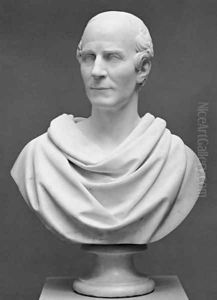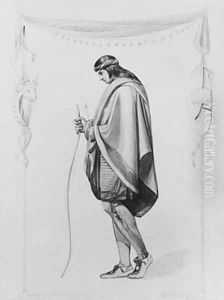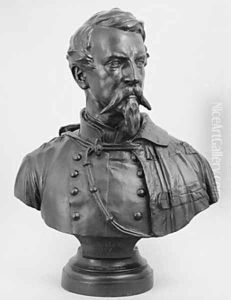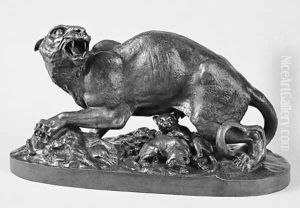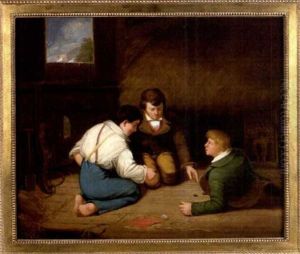Henry Kirke Brown Paintings
Henry Kirke Brown was an American sculptor active in the 19th century, recognized as one of the first American artists to create cast bronze sculpture in the United States. Born on February 24, 1814, in Leyden, Massachusetts, Brown pursued an early career as a painter before turning to sculpture. His transition to sculpture was influenced by his time in Italy, where he spent several years studying the works of the Italian masters, and was notably inspired by the Neoclassical style.
Returning to the United States in the late 1830s, Brown established himself as a sculptor, and in 1846, he created the first bronze statue cast in America, a work titled 'The Choosing of the Arrow' by a Native American. This marked a significant achievement in the development of American sculpture, and Brown went on to produce numerous public monuments and statues. Perhaps his most famous work is the equestrian statue of George Washington in Union Square, New York City, which was unveiled in 1856. It was the first equestrian statue of Washington ever made and one of the earliest equestrian statues in the country.
Throughout his career, Brown was an advocate for American art and artists. He was a founding member of the National Academy of Design and served as its president for a period. His work is characterized by a sense of realism and attention to detail, which was influenced by his belief in the importance of studying nature as the foundation for artistic creation. Brown's legacy includes not only his sculptures but also his role in helping to establish a distinctly American school of sculpture.
Henry Kirke Brown passed away on July 10, 1886, in Newburgh, New York. His contributions to American art were significant during a time when the country was still developing its cultural identity separate from European traditions. His sculptures and public monuments continue to be appreciated for their historical significance and craftsmanship.
